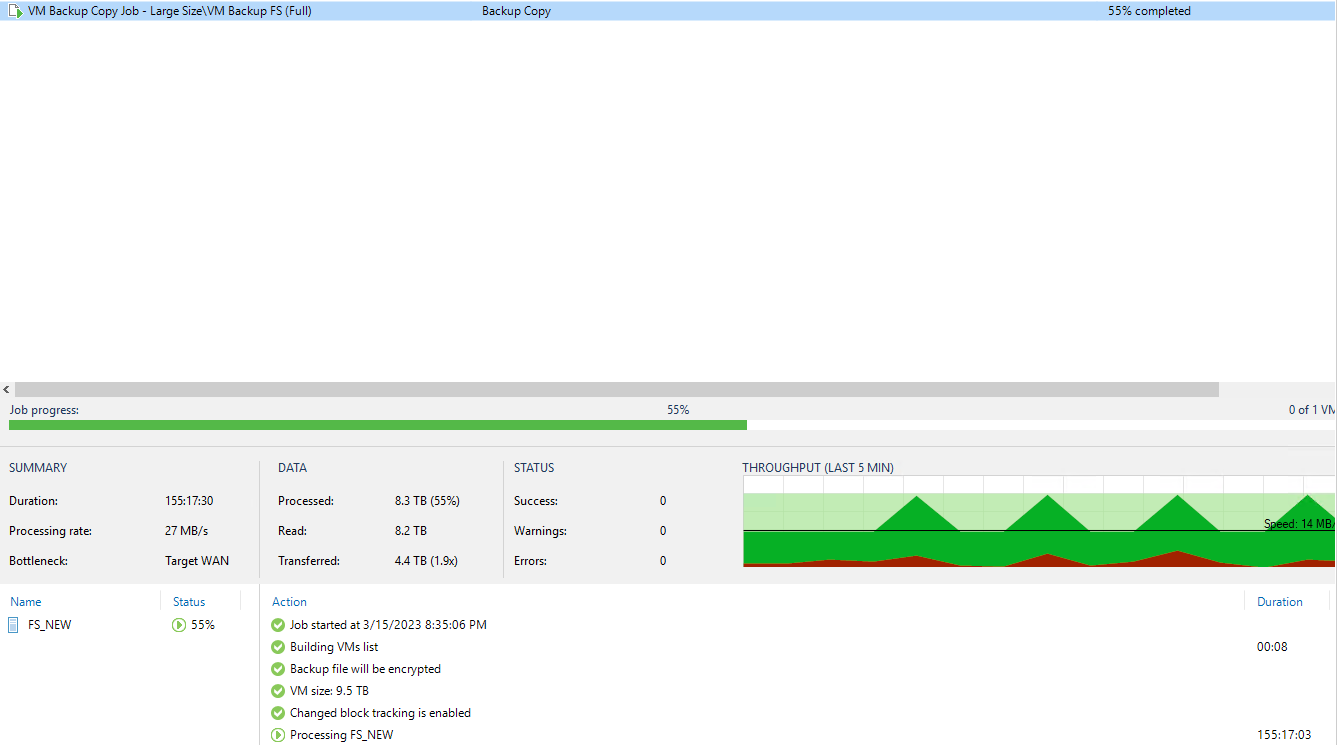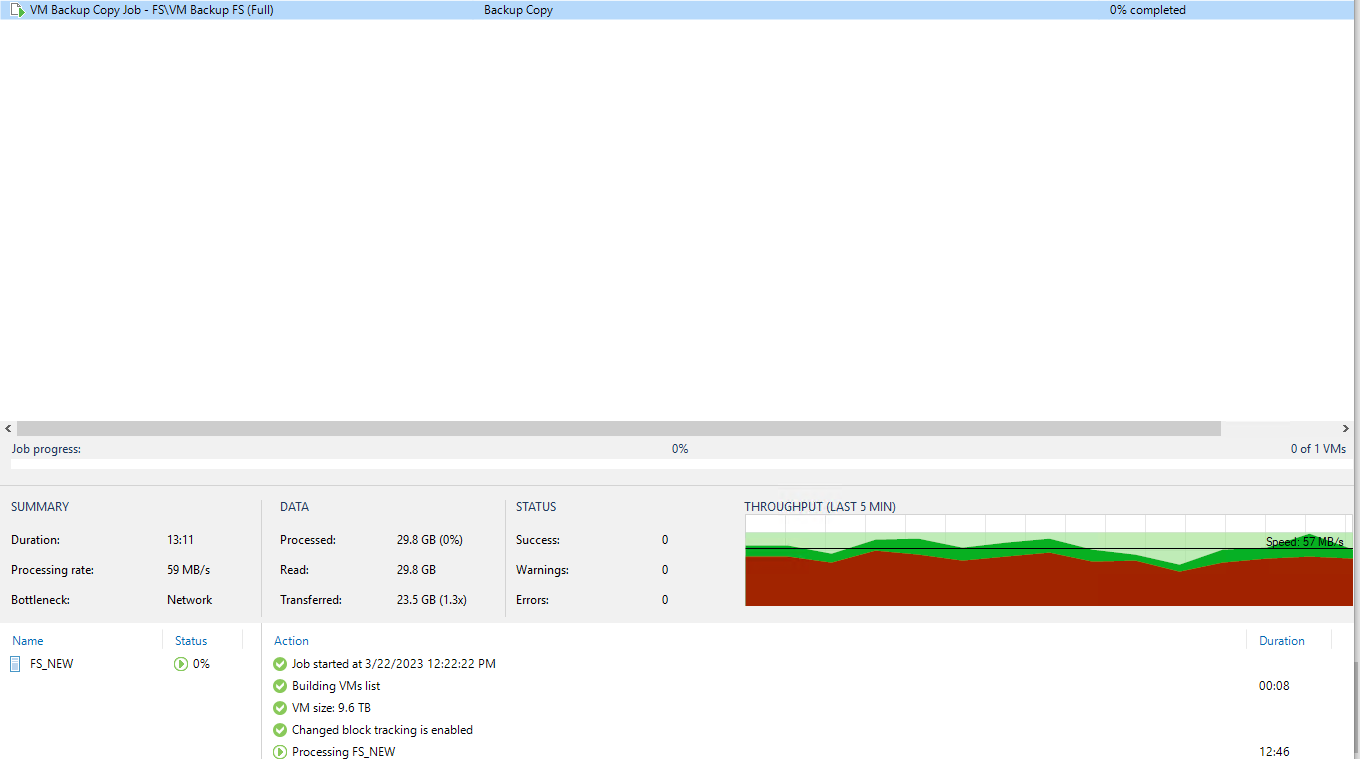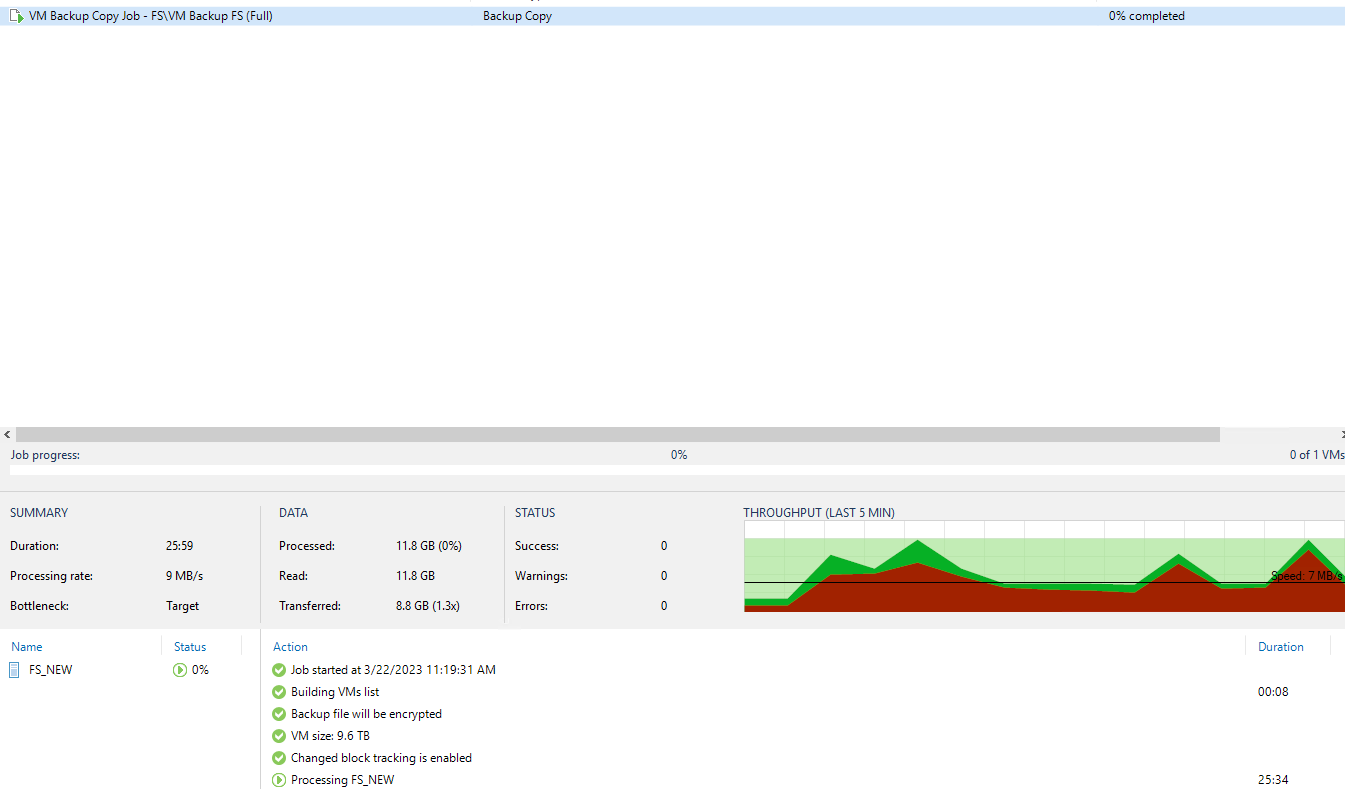Hello to all,
I configured Backup Copy Jobs to the second location via VPN.
Two WAN Accelerators on source side and one on destination.
VM’s with low disks are going perfectly but the problem is the big ones.
Our FileServer is arround 7TB. Is it normal to take this long, its the first Backup Copy job without initial seed.

Best answer by MicoolPaul
View original





